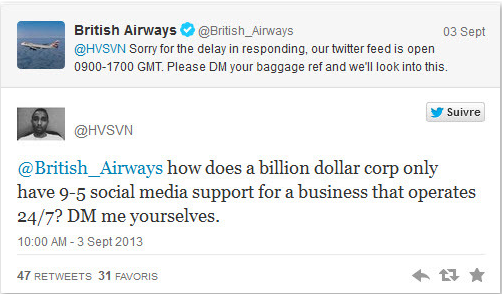
The social media landscape has allowed smaller brands to exponentially expand their reach. It’s given them much easier access to audiences and the ability to engage and connect like never before. But as with most marketing tools, it’s not a magical solution without its downside. Mistakes can happen, with the most glaring ones able to ruin a brand just as easily as it can build it up.
Following are basic social media faux pas marketers make that can end up hurting your sales, and how to avoid them when coming up with your social media strategy.
3 Types of Social Media Personas to Avoid
Before we get into the mistakes that can be made, let’s take a look at the types of marketers that commit them. Here are the three most basic ones.
The Pushy Seller
Hard selling hasn’t worked in a while, and as people have become increasingly social media savvy, it’s turned off even more people. No matter how good your product is, you can’t focus on shoving it upon people you believe are ready to buy. People have learned to tune out most branded messaging. One study even found that 42% distrusted brands, and an even higher 69% distrusted brands’ advertising.
To avoid spamming your audience with sales pitches, use social media to build relationships and develop trust. Ask your audience how you can help them address their pain points and meet their needs. Then, you can use their feedback to frame your follow-ups around that.
The Ghost
It’s the type of marketer that puts in the effort to grow their following, then promptly stops at that. Having a following doesn’t constitute having a social media presence. The whole point is to engage and interact. That’s what builds relationships, which ultimately results in sales.
Interacting with audiences allows you to get a better understanding of their challenges and motivations. Once you get a grasp of what resonates with them, you can then begin to either capture their interest, solve a problem, and present them with valuable content.
The Social Butterfly
This marketer does everything well on social media—understanding their audience by investing a lot of time engaging with them. Their downfall lies in not putting the same effort offline. Sure, you can get sales by establishing solid social media relationships. But people buy from people, for the most part, and not from brands.
There comes a time when audiences need to meet the people behind the company and brand. So whether it’s an event, or any type of personal interaction, marketers need to find a way to move the relationship offline and include it in their business plans. This humanizes the connection and nudges customers closer to a sale.
Social Media Mistakes to Avoid
Overposting
Have you ever had that friend that publishes 20 selfies in one post, for four straight days? How soon before you hit the unfollow button? As alluded to earlier, consumers already trust brands less, so overposting would only be taking the highway toward being tuned out by your audience.
Of course, overposting is a relative term. So to strike the right balance, take a look at your engagement levels. It’s acceptable to post five to 10 stories a day, the same can’t be said about an Instagram post.
Bad trending choices
It’s been standard practice to take advantage of trending topics for branding purposes. It’s almost always a good idea… until it’s not. Like when the US Air Force made a Yanny/Laurel joke about drone attacks.
In this outrage culture, be careful about what you post or you could go trending for the wrong reasons.
Failure to respond
You can’t just ghost your audience, particularly when it’s a customer airing out a bad experience. Not only do you need to respond, it has to be timely. This was a lesson British Airways found out the hard way.
You may not be able to take away the bad experience, but a prompt response can go a long way toward repairing your relationship with a customer.
Overlooking customer activity and past purchase research
It may take a lot of work to analyze the data provided by your CRM and your social analytics, but not taking advantage of the amount of data available to you could end up costly. When it comes to social media, this could mean publishing content that’s no longer relevant to your audience, or content that simply doesn’t push the needle when it comes to making a sale.
You don’t only need to understand what their problems and motivations are, you should keep abreast of where they are on their journey to solving them. This would improve conversion rates greatly.
Making the wrong offer
Speaking of lack of research, this is what can happen when you don’t practice due diligence when it comes to your customers. Consumers have become extremely high on relevant and tailored experiences, so it doesn’t help when you offer a 50-something-year-old prospect VIP access to a lit music festival.
With ample research, you provide yourself with plenty of opportunities to make the right offer, at the time it makes sense to your customer.
Pitching poorly
You could have narrowed done your list of qualified leads, done the proper research, engaged with them on social media, and it still wouldn’t lead to a sale if you try and close it with a poorly crafted pitch. There’s always time to realign your offer when you find it’s not exactly what your prospect needs.
For example, if you find that their issues lie in getting an updated software instead of a new laptop, you can change you pitch accordingly, highlighting how the new offer goes above and beyond just their current issues.
A big no-no would be to mislead your customers just to make a sale. You might close that one sale, but with people placing high regard on peer reviews, chances are you’ll end up losing much more than you made—especially when it spreads on social media.
Selling to existing customers
Yes, returning customers spend up to 67% more than new ones, but it doesn’t mean you should continually push them into a sale. Again, this is where researching customer activity comes into play. When they’re posting about their experiences about your product, it’s not the time to try and sell to them just yet.
But when you see buyer signals such as watching videos, or discussing other products with their peers, then that’s the time you can push sales content their way. Otherwise, stay put and continue building on your relationship with content on how they can enjoy their recent purchase better.
Takeaway
As you probably already know, social media is an extremely powerful tool for increasing brand awareness, understanding your audience, and connecting with them. These things when combined properly can boost your sales greatly. Conversely, when you neglect to practice social listening and do ample research, you can end up negating all the potential positive effects social media can have.
What’s the worst social media faux pas you’ve made? Let us know in the comments below.
3211 Views














